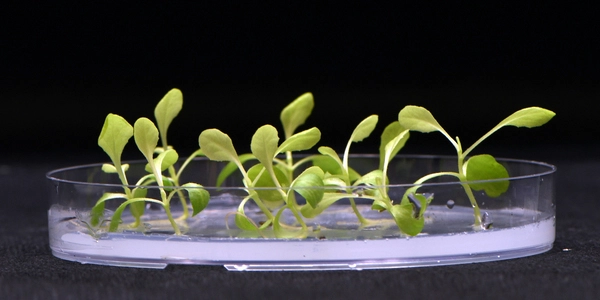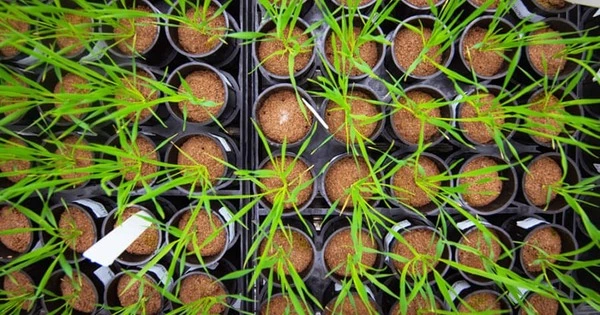Scientists have discovered a way to create food that does not require biological photosynthesis by using artificial photosynthesis. A two-step electrocatalytic process converts carbon dioxide, electricity, and water into acetate. In order to grow, food-producing organisms consume acetate in the dark. The hybrid organic-inorganic system has the potential to increase the efficiency of sunlight conversion into food by up to 18 times for some foods.
For millions of years, plants have evolved photosynthesis to convert water, carbon dioxide, and sunlight energy into plant biomass and the foods we eat. However, this process is inefficient, with only about 1% of the energy found in sunlight reaching the plant. Scientists at UC Riverside and the University of Delaware have found a way to bypass the need for biological photosynthesis altogether and create food independent of sunlight by using artificial photosynthesis.
The study, which was published in the journal Nature Food, employs a two-step electrocatalytic process to convert carbon dioxide, electricity, and water into acetate, the main component of vinegar. In order to grow, food-producing organisms consume acetate in the dark. This hybrid organic-inorganic system, when combined with solar panels to generate the electricity to power the electrocatalysis, could increase the conversion efficiency of sunlight into food by up to 18 times for some foods.
“We sought to identify a new way of producing food that could break through the limits normally imposed by biological photosynthesis,” said corresponding author Robert Jinkerson, an assistant professor of chemical and environmental engineering at UC Riverside.
Using artificial photosynthesis to produce food could represent a paradigm shift in how we feed people. By increasing the efficiency of food production, less land is required, reducing the environmental impact of agriculture. In non-traditional environments, such as outer space, increased energy efficiency could help feed more crew members with fewer inputs.
Robert Jinkerson
The output of the electrolyzer was optimized to support the growth of food-producing organisms in order to integrate all of the system’s components. Electrolyzers are electrical devices that convert raw materials such as carbon dioxide into useful molecules and products. The amount of acetate produced was increased while the amount of salt used was decreased, resulting in the most acetate ever produced in an electrolyzer to date.
“We were able to achieve a high selectivity towards acetate that cannot be accessed through conventional CO2 electrolysis routes using a state-of-the-art two-step tandem CO2 electrolysis setup developed in our laboratory,” said corresponding author Feng Jiao of the University of Delaware.
Experiments revealed that a diverse range of food-producing organisms, including green algae, yeast, and fungal mycelium that produces mushrooms, can be grown in the dark directly on the acetate-rich electrolyzer output. This technology is approximately four times more energy-efficient than growing algae photosynthetically. Yeast production is approximately 18 times more energy-efficient than traditional methods of cultivation that use corn sugar.

“We were able to grow food-producing organisms without any contributions from biological photosynthesis. Typically, these organisms are cultivated on sugars derived from plants or inputs derived from petroleum — which is a product of biological photosynthesis that took place millions of years ago. This technology is a more efficient method of turning solar energy into food, as compared to food production that relies on biological photosynthesis,” said Elizabeth Hann, a doctoral candidate in the Jinkerson Lab and co-lead author of the study.
The potential for employing this technology to grow crop plants was also investigated. Cowpea, tomato, tobacco, rice, canola, and green pea were all able to utilize carbon from acetate when cultivated in the dark.
“We discovered that a wide variety of crops could convert the acetate we provided into the major molecular building blocks required by organisms to grow and thrive. We may be able to grow crops with acetate as an extra energy source to boost crop yields with some breeding and engineering that we are currently working on” said Marcus Harland-Dunaway, a doctoral candidate in the Jinkerson Lab and the study’s co-lead author.
Artificial photosynthesis frees agriculture from complete reliance on the sun, opening the door to countless possibilities for growing food under the increasingly difficult conditions imposed by anthropogenic climate change. Drought, flooding, and decreased land availability would pose less of a threat to global food security if crops for humans and animals were grown in less resource-intensive, controlled environments. Crops could also be grown in cities and other areas that are currently unsuitable for agriculture, and could even feed future space explorers.
“Using artificial photosynthesis to produce food could represent a paradigm shift in how we feed people. By increasing the efficiency of food production, less land is required, reducing the environmental impact of agriculture. In non-traditional environments, such as outer space, increased energy efficiency could help feed more crew members with fewer inputs” Jinkerson stated.
This food production method was submitted to NASA’s Deep Space Food Challenge and was a Phase I winner. The Deep Space Food Challenge is an international competition in which teams compete for prizes for developing novel and game-changing food technologies that require minimal inputs while maximizing safe, nutritious, and palatable food outputs for long-duration space missions.
“Imagine giant vessels growing tomato plants in the dark and on Mars — how much easier would that be for future Martians?” said co-author and director of the UC Riverside Plant Transformation Research Center Martha Orozco-Cárdenas.





